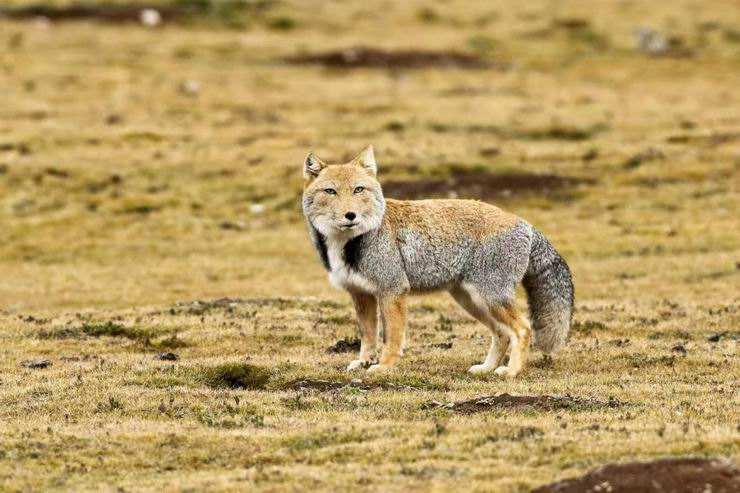Vulpes ferrilata
IUCN
LCBasic Information
Scientific classification
- name:Vulpes ferrilata
- Scientific Name:Tibetan fox, Xisha fox, fox, grassland fox, Tibetan sand fox
- Outline:Carnivora
- Family:Carnivora Canidae Vulpes
Vital signs
- length:49-65cm
- Weight:3.8-4.6kg
- lifetime:8-10year
Feature
Walking "Emperor of Facial Paralysis"
Distribution and Habitat
Mainly distributed in China, India, and Nepal.
It is widely distributed in Tibet, except in the forests of southeastern Tibet. This species is also distributed in Qinghai, Gansu, Xinjiang, Sichuan, northwest Yunnan, and western Sichuan.
It is found in semi-arid to arid areas of alpine meadows, alpine grasslands, desert grasslands, and mountains at an altitude of 2,000 to 5,200 meters.
Appearance
The body shape is similar to that of the red fox (Vulpes vulpes), but the back is brown-red and the belly is white; there is a wide light gray band on the sides of the body; it is clearly distinguished from the back and belly. The Tibetan fox has a distinct narrow light red nose and muzzle, and the crown, neck, back, and lower limbs are light red. The ears are small, brown behind the ears, and white inside the ears; the lower abdomen is light white to light gray. The tail is fluffy, except for the white tip of the tail. The tail length is less than 50% of the head and body length. The maxilla is narrow, the teeth are well-developed, the canine teeth are relatively long, and the distance from the front edge of the anterior orbital fenestra to the tip of the muzzle is longer than the width between the left and right molars.
Diurnal, solitary, but can also be seen breeding family groups with cubs together.
The main food is pikas and rodents. A study showed that 95% of the food was p
Details
The Tibetan name of the Tibetan fox is Bojiwama, and there is no subspecies.

Tibetan fox, it is estimated that many people know it from the emoticons circulating on the Internet. Its inherently funny "square face" and an expression that is always "world-weary" and "life is hopeless" quickly became the "Internet celebrity" in the animal world - the originator of facial paralysis. As long as it takes a glance at you, I believe it can see into the depths of your soul.
Tibetan foxes also play a certain role in preventing and controlling harmful animals on grasslands. Tibetan foxes mainly feed on rodents, which is very beneficial to agriculture and animal husbandry, and are also beneficial animals.
According to survey statistics, the highest distribution density of Tibetan foxes in Tibet is 0.9175/km², and the lowest is 0.0030/km² (there is 1 fox per 1.1~333.3km²). According to this density, the population size is calculated to be 3.7125±10414 (α=0.2) with a habitat area of 620,000 km², and the number of Tibetan foxes in the whole region is 37125~10414 (1989). In the 1970s, the annual purchase of skins in Qamdo was about 200, less than 50. Due to overhunting for many years, the number of Tibetan foxes has been decreasing sharply. Therefore, hunting should be stopped in some areas, and the population should be gradually restored before reasonable use.
Listed in the IUCN Red List of Threatened Species: Least Concern (LC), assessed in 2008.
Listed in the List of Terrestrial Wildlife with Important Economic and Scientific Research Values Protected by the State, issued by the State Forestry Administration on August 1, 2000.
Listed in the second level of the List of Wildlife under National Key Protection in China.
Protect wild animals and stop eating game.
Maintaining ecological balance is everyone's responsibility!








